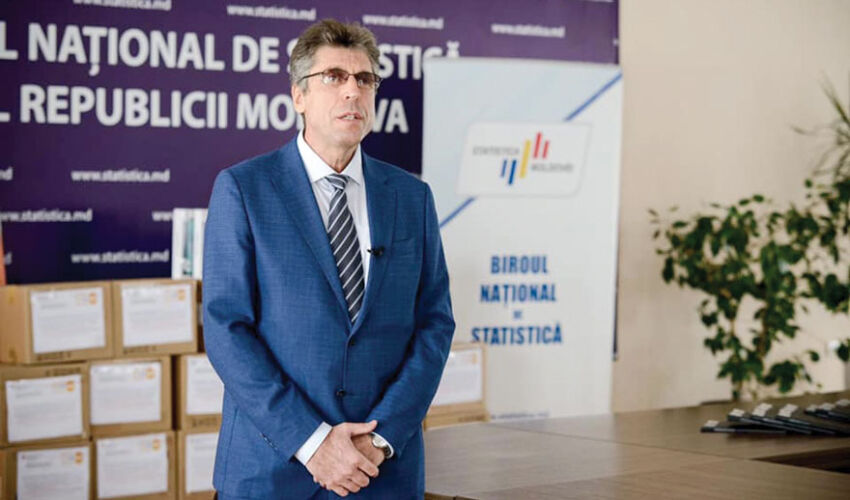
Oleg Kara, Director General of the NBS
How do you count the poor?
In international statistical practice, there are different approaches to defining the concepts of “poverty” and “poverty”. And in many respects they depend on the level of economic development of the country. Different concepts are used to assess poverty: absolute, relative, subjective. In Moldova, the concept of absolute poverty, based on the amount of money that a person can (or cannot) spend on his/her primary needs, has been used for official assessments so far.
In other words, monetary poverty calculations are based on the compliance of the population’s expenditures with the established minimum subsistence level (subsistence minimum, or poverty line, adopted at the national level – 3 thousand lei in 2024). According to the latest estimates, about one third of the country’s population – 31% – lives below the poverty line. This approach is used in many countries along with others using complex measurement methods.
The relative concept of poverty (correspondence to median values of expenditures), as well as the subjective concept based on the opinion of the population regarding the assessment of the achieved level of well-being are also widely used in the world practice. All of them are already mastered in one way or another by Moldovan statistics – in demographic and other social cross-sections of the social structure.
Oleg Cara, Director General of the NBS: “The absolute “poverty line” does not allow to fully assess the scale of poverty, the complexity and multidimensional nature of this phenomenon. Nowadays, in many countries such a concept as poverty is defined not only by the level of income or consumption. It is associated with the availability and quality of health care, education, public services (clean water, adequate sanitation, etc.) and employment. Therefore, the countries put forward as one of the most important tasks in the study of poverty the development of comprehensive indicators that would make it possible to assess the impact of all these factors on the level and quality of life”.
But, according to the head of the statistical agency, we will not escape from “monetary poverty” either. Two indicators – monetary and multidimensional poverty – will be measured in parallel, published with a small time interval, and serve different sustainable development goals.
How many dimensions does Moldovan poverty have?
Since 2016, Moldova has also joined the process of measuring multidimensional poverty. The same criteria that are used in the EU countries have been chosen to assess material deprivation. But not yet on such a scale, but following its national ideas of necessary and sufficient.
In EU countries, people at risk of poverty and social exclusion are those who are at risk of income poverty, and/or experiencing severe material deprivation (deprivation), and/or living in households with extremely low labor intensity.
For example, criteria for deprivation in the EU could be people’s negative answers to a number of questions. For example, whether a person (or household) can afford: a new computer, replacement of dilapidated furniture, worn-out clothes, a joint dinner with friends (at least once a month), regular vacation trips, spending a small amount of money each week on their own needs, etc.
Other criteria take into account such possibilities as the timeframe for saving up to buy a new car, buying a house in a certain area. Or the problem of social exclusion due to low intensity of weekly labor and other types of restrictions on access to material and public goods – high-paid jobs, expensive private medical services, leisure, etc.
In Moldova, for the time being, everything will be much more prosaic. Multidimensional poverty in Moldova will be measured on the basis of 11 criteria (using the Alkire-Foster method) in the main areas, including health, education, living conditions and employment. In 2022, the NBS carried out the first experimental calculations.
“Multidimensional poverty captures aspects of a population’s life that cannot be measured using value-based indicators. A household may have an average income but lack potable water, lack access to quality health and education services, decent work, live in an environmentally unfavorable region. The use of the deprivation method in measuring poverty will allow us to better understand the prevalence and complexity of this phenomenon and develop appropriate approaches to overcome it,” says Oleg Kara.
Experimental measurements of poverty
By the end of the month, the NBS will present the Multidimensional Poverty Index for the first time as an official statistical indicator comparable at the national, regional and international levels. The measurement results will also be representative by sex and age categories of the population, region of residence.
The Multidimensional Poverty Index (MPI) will serve as a kind of poverty line and will be designed to reflect multiple deprivations experienced by the country’s residents in various spheres of life. The method for calculating the Multidimensional Poverty Index has been developed by OPHI jointly with UNDP. In Moldova, it is set at 35%.
According to experimental calculations, in 2022, the multidimensional poverty rate in Moldova, defined as the share of the population experiencing deprivation in at least 35% of weighted indicators, reached 27.5%. And it will soon be known how much it has changed after a few intervening years.
In addition, we will learn the qualitative characteristics of Moldovan poverty. In other words, how many of these 27.5% of the poor population are the most vulnerable and in what positions. The “Poverty Intensity” indicator, or the degree of deprivation experienced by the poor, was 46.5% in 2022. This meant that for almost half of the poor, there was little chance of getting out of that state…..
“The way we define poverty thresholds and the importance of each dimension may vary, depending on which aspects of deprivation we pay more attention to,” notes Oleg Kara. – These limitations can be mitigated by regular updates of the IMB. Since the national IMB can provide information on how multidimensional poverty is changing, it should be regularly updated to better track progress in reducing poverty by 2030″.
The choice of dimensions and indicators to assess multidimensional poverty is determined by national development objectives. A very handy tool.









